How to Use Microsoft Teams Kanban Board for Better Workflow

Sorry, there were no results found for “”
Sorry, there were no results found for “”
Sorry, there were no results found for “”

Managing projects efficiently is more than just tracking tasks—it’s about ensuring seamless collaboration, clear accountability, and continuous improvement.
For example, imagine a software team juggling multiple client projects. The project manager decides to implement a Kanban board to organize tasks, and suddenly:
✅ Visual task tracking reduces confusion
✅ The workload is evenly distributed among team members
✅ Deadlines are met more consistently
Sound like something your team could use?
In this guide, we’ll show you how to set up and maximize a Kanban board in Microsoft Teams to improve task management, collaboration, and efficiency.
You can set up a Kanban board in Microsoft Teams using Planner or Azure DevOps to manage tasks visually (but this has some limitations)
A Kanban board is a visual, agile tool to manage tasks and workflows. It helps teams stay organized and track progress.
Typically, tasks are represented as cards and move across columns labeled To Do, In Progress, and Done. This system ensures transparency, making it easy to see who is working on what.
Kanban boards are especially popular with Agile teams because they:
As teams grow, Kanban boards alone aren’t enough if work is spread across too many tools.
This kind of Work Sprawl makes it harder to maintain visibility, ownership, and momentum, even with visual workflows in place.
Get a fully structured Kanban board without starting from a blank slate. The ClickUp Kanban Board Template comes pre-built with customizable columns, task statuses, priorities, and automation-ready workflows, so you can start organizing work and tracking progress in minutes, not hours.
Setting up a Kanban board in Microsoft Teams can transform how your team manages tasks and collaborates on projects.
There are plenty of ways to create one right inside Teams. You can choose from free and paid options, Microsoft’s Kanban tools, and third-party add-ons that offer similar features.
The ecosystem has free tools like Microsoft Planner and Azure DevOps that help create a Kanban board in Teams. Since Azure Boards can seamlessly integrate with Microsoft Teams, let’s explore it to make a Kanban board.
🧠 Fun Fact: The word “Kanban” comes from the Japanese word for “visual signal” or “card,” reflecting how cards represent tasks on the board to track progress!
First, log into Microsoft Teams and either create a new team or choose an existing one to house your Kanban board.
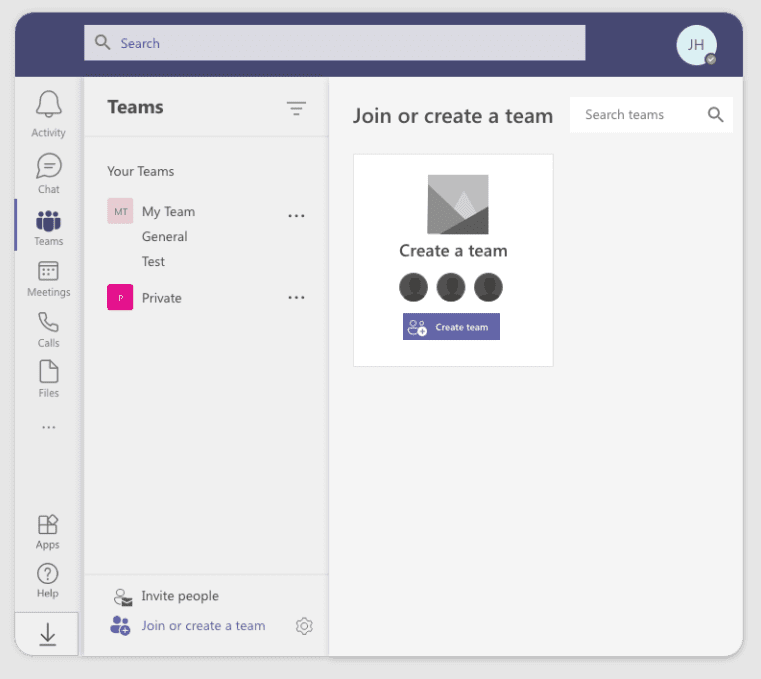
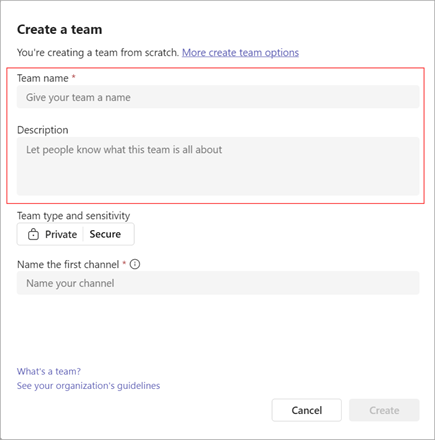
You’re good to go if you already have a team set up! This new team area will be the central hub for task management and project collaboration.
Simultaneously, you must set up your Azure DevOps project to create your Kanban board.
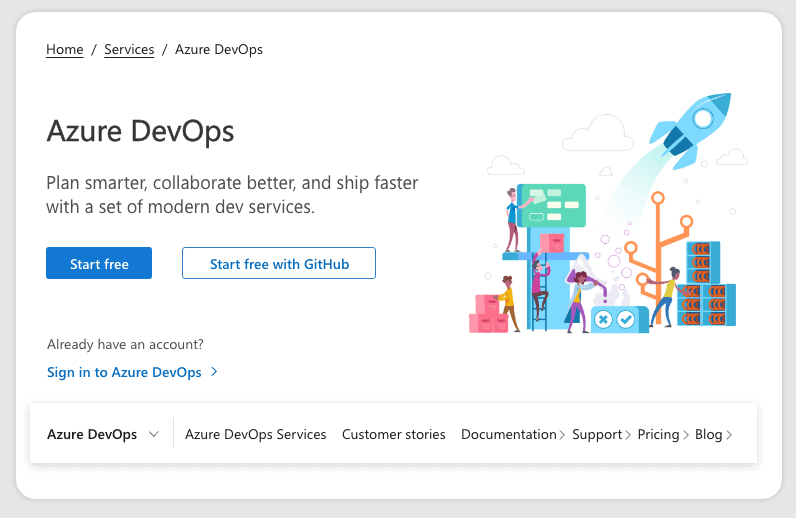
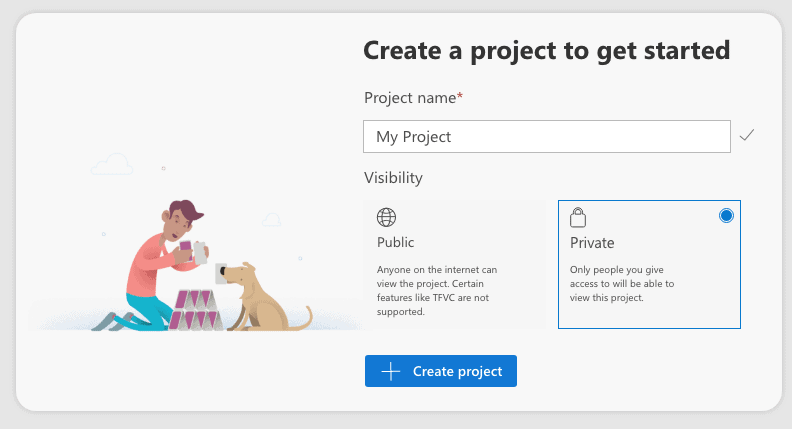
Once your project is on Azure DevOps, it’s time to configure your Kanban board.
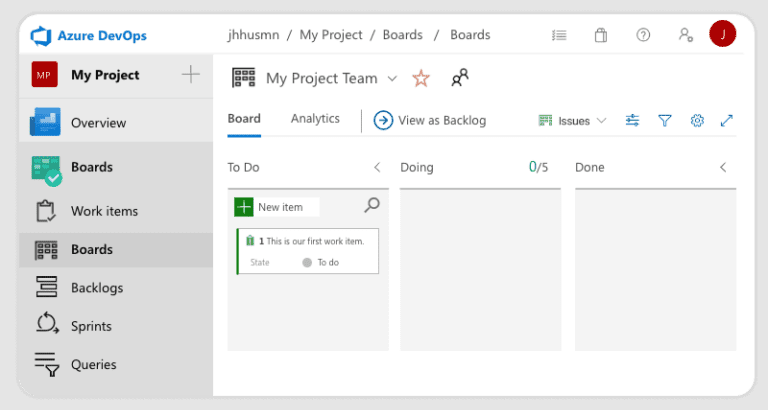
This board will act as the visual representation of your tasks and progress.
Now, let’s integrate your Kanban board into Microsoft Teams.
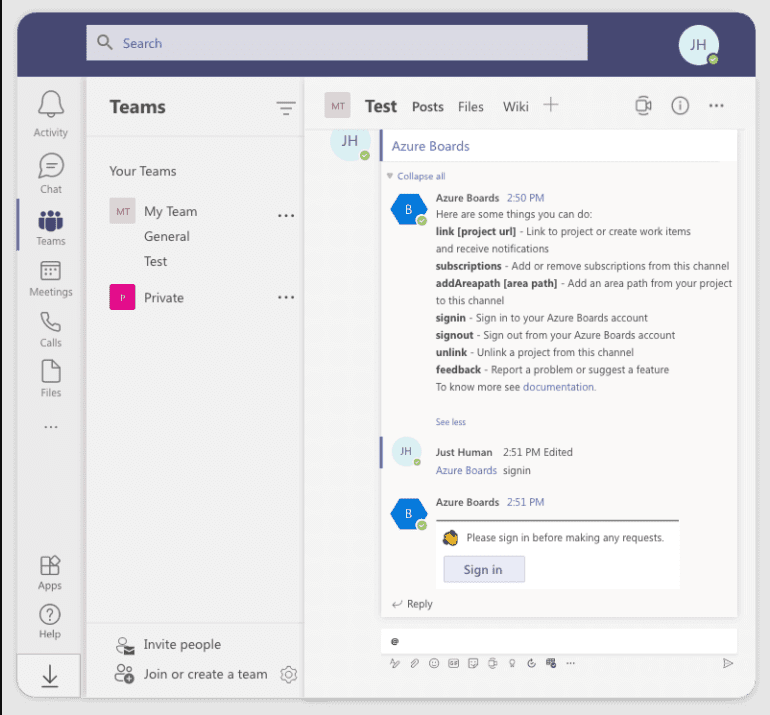
Once set up, your team can interact with the board directly within MS Teams.
Now, you can easily add work items from your Microsoft Teams to your Kanban tool by following these steps:


These steps ensure every specific task is tracked and managed effectively.
With the board now set up, you can monitor your team’s progress and collaborate directly within MS Teams.
Now, your Kanban Board is set up and fully functional. You can also maximize its potential by integrating other tools from the Microsoft ecosystem, such as SharePoint and Power Automate.
Advanced features are unavailable in the free plan, but you can still use some essential advanced tools to improve your workflow continuously.
👀 Did You Know: While Kanban originated as a manufacturing system at Toyota, David J. Anderson adapted its principles for knowledge work, particularly in software development and IT operations.
While Microsoft Teams offers basic Kanban functionality, it has some drawbacks:
Are these limitations of creating Kanban boards on Microsoft Teams dealbreakers? You’ll be happy to know there’s a solution that addresses those roadblocks head-on: ClickUp.
It’s the everything app for work that combines project management, knowledge management, and chat—-all powered by AI that helps you work smarter and faster.
The ClickUp Board View has a user-friendly interface, making Kanban boards easy for everyone on your team. It’s also versatile and can adapt to the complexity of your project, no matter how big or small.
Here’s how you can set up your Kanban board in ClickUp:
Start by creating a workspace tailored to your team’s needs.
Unlike Microsoft Teams, there’s no limit to the number of boards or spaces you can create, making it perfect for scaling projects.
Skip the hassle of building a Kanban board from scratch by deploying one of ClickUp’s ready-to-use templates.
These templates eliminate setup time and come pre-configured with columns, task cards, and workflows.
📮ClickUp Insight: 92% of knowledge workers risk losing important decisions scattered across chat, email, and spreadsheets. Without a unified system for capturing and tracking decisions, critical business insights get lost in the digital noise.
With ClickUp’s Task Management capabilities and views, you never have to worry about this. Create tasks from chat, task comments, docs, and emails with a single click! View them all in customizable Dashboards.
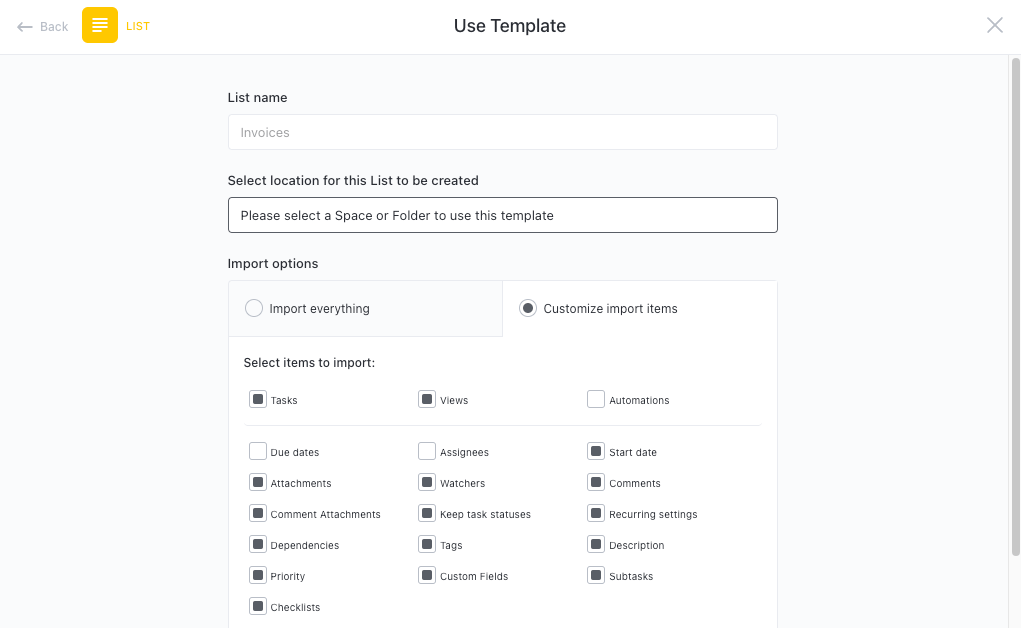
With ClickUp, you have complete control over your board’s appearance, with options to customize task fields and even integrate external tools—all things Microsoft Teams struggles with.
Assign tasks to your team members with just a few clicks.
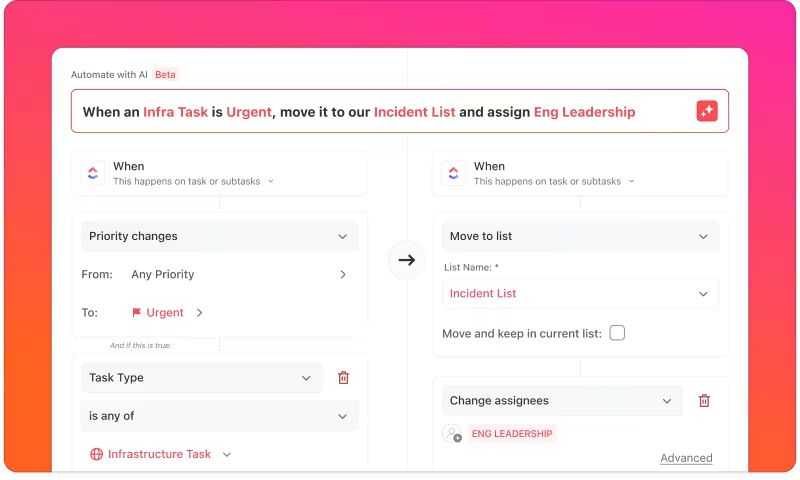
Unlike Teams, ClickUp offers robust automation options to minimize manual work.
Communication and tracking are effortless in ClickUp.

Say goodbye to the notification limitations—ClickUp ensures you’re always in the loop.
ClickUp’s advanced features can help you in tracking your team’s progress.
With these tools, you can witness a continuous improvement in your teams’ efficiency and workflow.
💡Pro Tip: Use ClickUp’s Work in Progress (WIP) limits to cap the number of tasks in specific columns. This will help prevent your team from multitasking too much and focus more on completing current tasks before starting new ones.
ClickUp is an everything app that addresses the common limitations users face with Microsoft Teams:
ClickUp’s interface is so much more refined than Trello’s. From the general visual presentation to the level of control the user has over the interface… It’s so much more than a Kanban board, but even its Kanban view is just cleaner.
A Kanban board should do more than just organize tasks—it should streamline work, eliminate bottlenecks, and drive efficiency. While Microsoft Teams offers a basic setup, its automation, reporting, and customization limitations can slow your team down.
ClickUp is an excellent alternative to Kanban boards in Microsoft Teams and takes it to the next level with:
✔ AI-powered automation for smoother workflows
✔ Customizable boards that adapt to any project
✔ Real-time insights to track progress effortlessly
Why settle for less? Try ClickUp for free and build a smarter, more efficient Kanban system today.
Yes, but only by integrating tools like Planner or Azure DevOps, which adds setup complexity and limits customization. Native Kanban functionality is not built into Microsoft Teams itself.
Microsoft Teams Kanban boards lack advanced automation, reporting, time tracking, and dependency management. Teams often need additional tools to handle real workflow complexity.
ClickUp offers fully customizable boards, built-in automation, real-time reporting, and native time tracking in one workspace. This removes the need for external Kanban integrations.
Only partially, and usually through Power Automate or Azure DevOps. In contrast, ClickUp supports native Kanban automation like status-based task movement, auto-assignments, and priority routing.
If your workflow needs automation, reporting, dependencies, or scaling across teams, Microsoft Teams Kanban becomes restrictive. Dedicated platforms like ClickUp are better suited for long-term workflow management.
© 2025 ClickUp